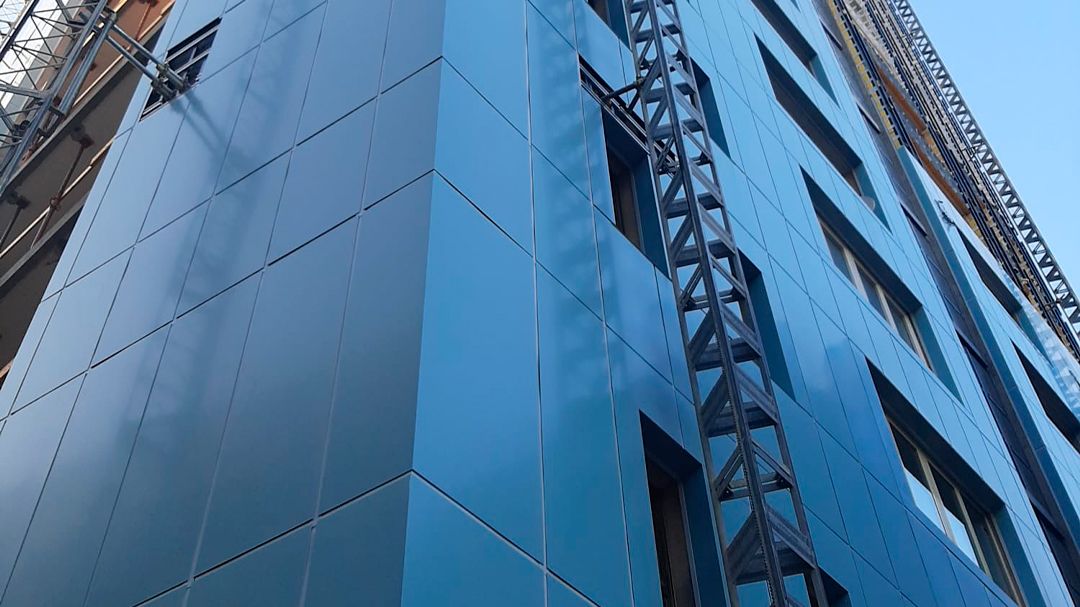Urbanisation will and must create more living space in urban agglomerations. In addition to the topic of new construction, building renovation and building heights play a central role. Alongside the general refurbishment and renovation as well as the revitalisation of buildings, energy-efficient renovation plays a key role. Because a large part of the invested cost is amortized – simply by saving heating and cooling costs. This effect is often underestimated and not taken into account. Furthermore, frustration often arises because the desired results of the renovation are delayed or not fully achieved. But what are the reasons for this and how can they be solved when renovating buildings ?! We aim to address these and other topics in this report.
Which areas are to be considered energetically?
Basically, we have energy losses in a building wherever the inside temperature and outside temperature differ – i.e. primarily with outside walls, roof and windows. In addition, energy is lost through the floor slab, basement walls and possibly foundations. These areas can often only be redeveloped with increased effort, as earthworks and, in some cases, foundation work are necessary for this. In our view, however, these areas play a subordinate role in building renovation. Why? Because the losses are significantly reduced, as the soil usually has a temperature of +4 to +6 degrees even in winter. That means: there are significantly small temperature differences between inside (22 degrees) and outside (-8 degrees).
The greatest heat losses thus occur in the area of the roofs and facades.
How do I get simple and very good energetic solutions through the building renovation?
When developing a renovation concept for the building envelope, the details, connections, materials used and thermal bridges should be in the foreground during the renovation measures. In other words: construct simple and practical details, provide minimal penetration of the insulating layer and use weakly to non-conductive materials for the substructures and connections. These points should always be considered holistically for the building renovation. Roof to facade or facade to window – the elements should always be developed together and coordinated with all trades and solutions. Basically there is very good thermal insulation for an energetic building renovation, but unfortunately it is literally riddled with holes during the renovation by the wrong substructures and materials. The thermal conductivity of the individual layers and materials plays a major role here. While aluminum with approx. 160 W / m * K is a very high heat transfer medium, GRP (0.30 W / m * K) or stainless steel (35-50 W / m * K) in punctured designs can make a significant contribution to reducing energy losses . A factor of 2-5 can be achieved with just the selection of the insulation and substructure, and a few simple solutions can make a significant contribution to efficiency.
If you consider insulation with, for example, 180mm (WLG 035) for energetic building renovation, then the associated U-value undisturbed is approx. 0.19 W / (m² * K). However, if the insulation is bridged with, for instance, an aluminum substructure and a thermal stop (2 brackets / m²), then only an effective U-value of approx. 0.39 W / (m² * K) is achieved. However, if you choose a passive house-certified stainless steel substructure (e.g. TEKOFIX A ++) instead of the aluminum substructure, you will achieve an effective U-value of approx. 0.196 W / (m² * K). Even the decision to use a different material increases the U-value of the outer wall enormously. With increasing requirements, the savings increase. The lower the U-value, the higher the savings in heating costs. In summary, you have to be aware that the thermal insulation is the only layer that enables a building to keep heat inside and keep heat outside (summer heat protection).
Which critical details are there in the energetic building renovation and who can provide support?
As mentioned above, the critical details in building renovation are the transitions where most of the energy is lost. These include:
- Roof connection to the facade
- Facade to window
- Facade insulation in the area of the upper edge of the site
- Areas of cantilevered components such as canopies, balconies and protrusions within the facade.
Here, however, it is also crucial to rely on the right material and the right substructure. Thermal insulation only works if the substructure does not destroy or signifcantly effect the thermal performance. The project consultants from BEMO can offer you support with the renovation in the form of advice, as can the technical office, which deals with building physics, among other things. Feel free to contact us directly.
Easy and economical renovation of roofs and facades
In addition to the topics addressed, such as materials, substructures and structural details, there is a further optimisation in the holistic view and in the anchoring grounds. That means, depending on the subsurface and structure, it is important to carefully analyse the possible and sensible types of cladding and the load-bearing capacity of the subsurface.
A concrete ceiling, for example, which has to be renovated, or a concrete wall can be statically loaded very well and systems can be used that transfer the forces that arise. Here it is important to find out and determine which maximum distances are possible and how to keep the punctual substructures, which are thermal bridges, as small as possible. Added to this is the consideration of the entire U-value and which requirements are placed on the building in terms of energy. If the anchoring base in the roof or wall area is poor, then a networked, load-bearing substructure must be applied and calculated. The forces are thus distributed and the anchoring ground, which is not so stable, can still be loaded and insulated. Thermal insulation only works if it is viewed and evaluated as a whole. For this purpose, BEMO offers structural and static solutions for metallic roof and facade solutions.
Carry out the building renovation with experts
The specialists at BEMO have many years of experience with energy-efficient building renovation and sustainable buildings. With the complete solutions from BEMO, you are in the best of hands, from planning to implementation. Simply contact us and let the BEMO experts advise you on individual building solutions.








